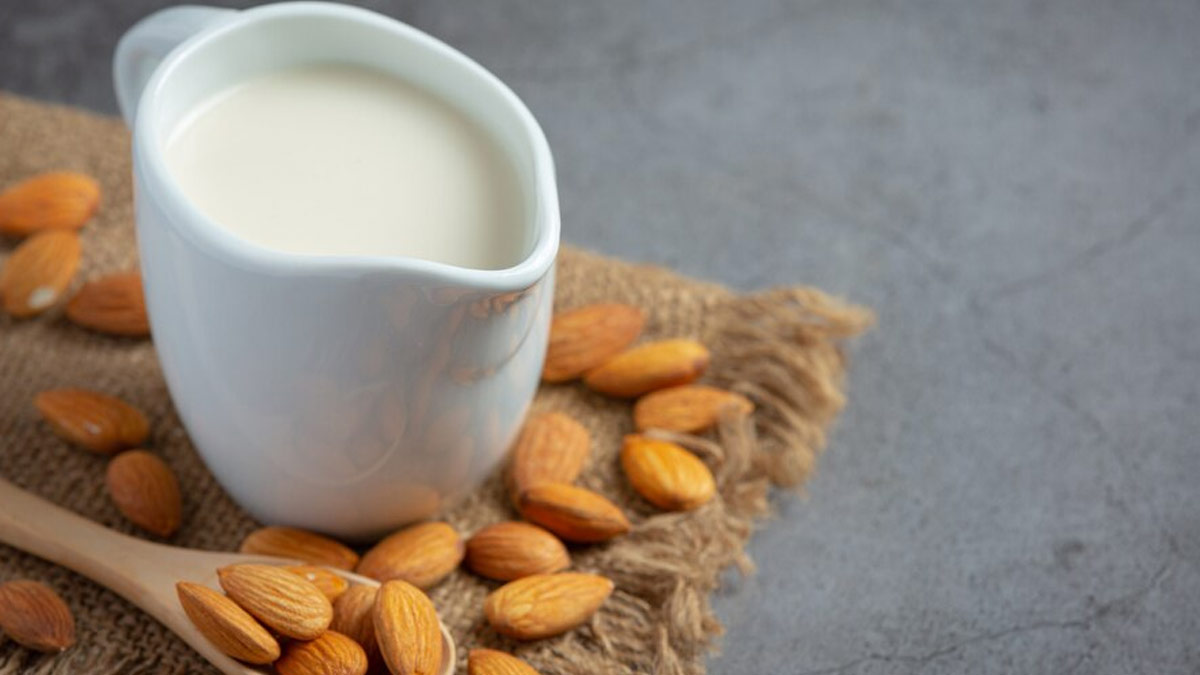
In the search for healthier, plant-based alternatives, almond milk has become a new favourite. Made from almonds, this creamy, nutty milk is an amazing substitute for dairy and comes with a host of health benefits. Whether you're lactose intolerant, vegan, or just looking for a nutritious addition to your diet, almond milk is a great choice. If you’re considering adding almond milk to your diet or looking to make it yourself, here’s everything you need to know about its benefits and a simple recipe to get you started.
Table of Content:-
Health Benefits of Almond Milk
1. Nutrient-Rich

Almond milk is packed with essential nutrients that can contribute to overall health. It's a good source of vitamin E, an antioxidant that helps protect cells from oxidative damage and supports skin health. Fortified almond milk also contains added vitamins and minerals, such as calcium, vitamin D, and vitamin B12, making it a nutritious choice for those on a plant-based diet.
2. Low in Calories
One of the main reasons people opt for almond milk is its low-calorie content. A cup of unsweetened almond milk typically contains only about 30-40 calories, significantly lower than cow’s milk. This makes it an excellent choice for those looking to manage their weight or reduce calorie intake while still enjoying a creamy, satisfying beverage.
Also Read: Goat Milk For Hair: Here Are Its Benefits And How to Use It
3. Heart-Healthy

Almond milk is heart-healthy due to its low saturated fat content and high levels of unsaturated fats. The almonds used to make almond milk are rich in monounsaturated fats, which have been shown to support heart health by improving cholesterol levels and reducing the risk of heart disease. A study involving healthy individuals found that consuming 66 grams of almonds or almond oil daily for six weeks led to a 6% decrease in 'bad' Low-Density Lipoprotein (LDL) cholesterol, a 14% reduction in triglycerides, and a 6% increase in 'good' High-Density Lipoprotein cholesterol.
4. Lactose-Free and Dairy-Free
According to a 2016 study, almond milk is naturally free of dairy, making it an ideal choice for vegans and those with dairy allergies or lactose intolerance. It contains no lactose, casein, or cholesterol, making it suitable for those with dairy sensitivities or those following a vegan lifestyle. Almond milk provides a similar texture and flavour to cow’s milk, allowing it to be used in a variety of recipes and beverages without compromising on taste.
5. Supports Bone Health

Many brands of almond milk are fortified with calcium, essential for maintaining strong and healthy bones. Calcium is vital for bone density and can help prevent conditions like osteoporosis. Additionally, almond milk often contains added vitamin D, which works synergistically with calcium to enhance bone health.
Also Read: From Weight Gain To Causing Acne: Expert Debunks Myths About Milk
How to Make Almond Milk at Home
Making almond milk at home is simple and allows you to customise the flavour and sweetness to your preference. Here’s a basic recipe to get you started:

Ingredients
- 1 cup raw almonds
- 4 cups water
- 1-2 tablespoons sweetener (optional; you can use honey, maple syrup, or a few dates)
- 1 teaspoon vanilla extract (optional)
- A pinch of salt (optional)
Instructions
- Start by soaking the almonds in a bowl of water. Immerse them in water and allow them to soak for a minimum of 8 hours or overnight. Soaking helps soften the almonds, making them easier to blend and resulting in a creamier milk.
- After soaking, drain and rinse the almonds thoroughly under cold running water.
- Place the soaked almonds in a high-speed blender and add 4 cups of fresh water. If you’re using sweetener, vanilla extract, or a pinch of salt, add them at this stage. Blend on high for about 1-2 minutes until the almonds are finely ground and the mixture is smooth and creamy.
- To separate the almond milk from the almond pulp, use a nut milk bag, cheesecloth, or a fine-mesh strainer. Pour the blended mixture through the strainer into a large bowl, using a spoon or spatula to press out as much liquid as possible. The remaining almond pulp can be used in baking or as a base for other recipes.
- Transfer the freshly made almond milk into a clean glass jar or bottle. It can be stored for up to 4-5 days in the refrigerator. It is recommended to shake well before each use, as natural separation may occur.
[Disclaimer: This article contains information for informational purposes only, hence, we advise you to consult your own professional if you are dealing with any health issues to avoid complications.]
Also watch this video
How we keep this article up to date:
We work with experts and keep a close eye on the latest in health and wellness. Whenever there is a new research or helpful information, we update our articles with accurate and useful advice.
Current Version